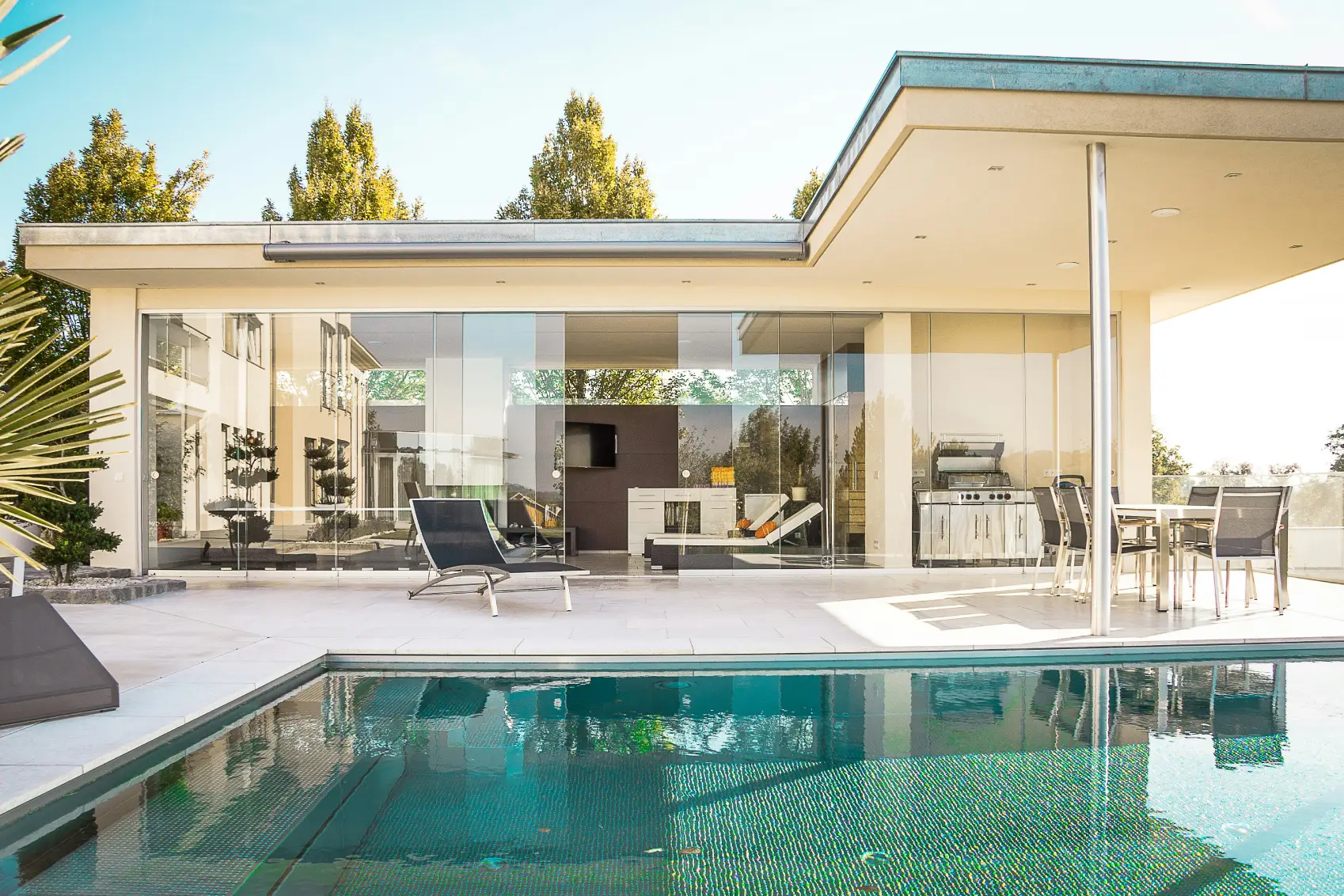
If you want to expand your home from the back but not quite sure how to add that space, you’re in the right place.
Extending your living area while keeping it stylish and functional can be tricky, but not when you follow practical rear house extension ideas. Whether you want a sun-drenched dining nook, a family room, or a place for your hobbies, rear house extensions offer exciting possibilities.
Today, we’ll share ten practical rear extension ideas that elevate your home’s functionality and value. Ready to see how these ideas can work for you? Keep reading.
Top Rear House Extension Ideas
If you’ve decided to extend your house from the rear, rest assured, knowing that you can do it in many smart ways. Here are a few practical and aesthetic rear house extension ideas:
Glass Conservatory Extension
A glass conservatory extension can bring more natural light into your home since it adds a glass-walled room to the rear of your house. It mostly uses large panes and minimal framing to maximize sunlight. A conservatory is a good rear extension on semi detached house because it creates a connection between your indoor and outdoor areas. However, before getting on with this extension, consider factors like insulation and climate control since glass can make the room hotter in summer and cooler in winter. Also, you think about the house extension cost, as high-quality glazing and materials can be an investment.
Kitchen Extension
Here comes one of the best rear small terraced house extension ideas: a kitchen extension. It expands your kitchen area to create a more spacious and functional cooking and dining space. You can experience these changes by extending the rear of your house to accommodate additional countertops, storage, or an open-plan dining area. It’s an excellent option for those who love cooking or entertaining family and friends, as it can turn the kitchen into the heart of the home.
Sunroom Addition
Adding a sunroom is another wonderful rear house extension idea for your home. A sunroom is a space enclosed with large windows to allow in plenty of sunlight while protecting you from the elements. If you’re planning a sunroom, think of factors like orientation to the sun, insulation, and ventilation to ensure the space is comfortable throughout the seasons. Also, consider if a single storey extension like this fits your needs and budget.
Two-Storey Extension
If your house needs a major upgrade because there’s never enough space for the family, you’ll need a two-storey rear extension. It builds an additional level onto your rear extension and effectively doubles the added space.
If you opt for this extension, you can easily add a new master suite upstairs and expand the living area downstairs. While this option offers substantial benefits, the 2 storey extension cost will be high because of the complexity of the construction and structural requirements.
Wrap-Around Extension
A wrap-around extension combines a rear and side extension and often results in an L-shaped structure. It gives you a large open-plan area, which suits modern living spaces that blend kitchen, dining, and lounge areas.
For instance, you can choose a wrap-around extension to create an expansive ground floor layout, to get plenty of room for your active lifestyle. You can go with side house extensions in conjunction with the rear extension to achieve this and make efficient use of available space.
Living Room Extension
Expanding your living room will take your home’s comfort and usability up a notch. Extending the rear of your house creates a larger space for relaxation, entertainment, and family gatherings. This extension helps you reconfigure your living area to add more seating, incorporate a media center, or create an open-plan layout that flows into your kitchen or dining room. If you’re considering a modest expansion, a 3 meter house extension is a practical option. It provides enough extra space without overwhelming your garden area.
Garden Room
A garden room is a wonderful way to bring the outdoors inside. This extension creates a dedicated space at the rear of your home that opens up to your garden and features large windows or sliding doors. This room can serve multiple purposes—be it a casual lounge, a playroom for the kids, or a spot for reading and relaxation.
Art Studio with Skylights
If you need a room to do your arts and crafts, adding a rear extension to semi detached house will give you that room. This extension gives a dedicated creative space filled with natural light for activities like painting, sculpting, or crafting. The skylights make sure that you have ample daylight, reducing the need for artificial lighting and creating an inspiring atmosphere.
Utility and Laundry Room
A separate place for chores means no more mess inside the house, and that’s what this rear house extension can do. A utility and laundry room provides a separate area for chores like washing, drying, and ironing, keeping these activities out of your main living spaces. It helps in decluttering your home by offering extra storage for cleaning supplies and other household items.

Library with Reading Nooks
For book lovers, a library with reading nooks is an ideal extension where you can create a quiet retreat filled with your favorite books. You can incorporate comfortable seating by the windows or in secluded corners to make the most of the area. With built-in shelves and thoughtful lighting, even a small extension can be transformed into a home library.
Get a Rear House Extension For A Bigger Footprint
Expanding your home with a rear house extension is a smart move if you need more space. It’s cost-effective compared to moving and allows you to customize your living area to fit your lifestyle. Whether you need a bigger kitchen or more room for relaxation, extending your house can make a positive difference.
FAQs
How much does a rear extension cost?
For a small rear extension, costs range from £30,000 to £42,000. A medium extension could cost between £40,000 and £56,000, while larger extensions can range from £100,000 to £140,000. The cost per square meter falls between £1,800 and £3,000, with more complex projects potentially costing more.
Do I need planning permission for a rear extension?
Rear extensions can be covered under Permitted Development rights in many cases, which don’t require planning permission if some conditions are met. However, this depends on the size and scale of the project, as well as local planning regulations. For larger or more complex extensions or those on designated land (like conservation areas), you will likely need to apply for planning permission.
How much does it cost to do a back extension?
A small back extension might cost from £30,000 to £42,000, a medium-sized extension from £40,000 to £56,000, and a large extension from £100,000 to £140,000.
How far can you extend out the back of your house?
The extent will depend on the type of property, the area’s planning regulations, and whether the extension falls under Permitted Development rights. Generally, for detached houses, you can extend up to 8 meters while semi-detached and terraced houses can extend up to 6 meters.



